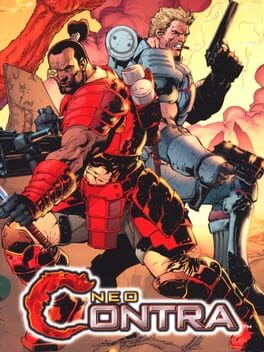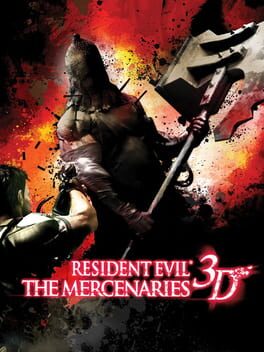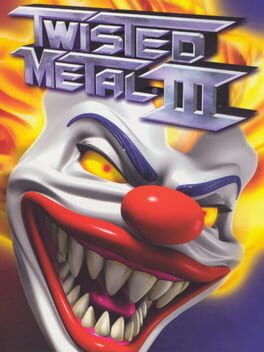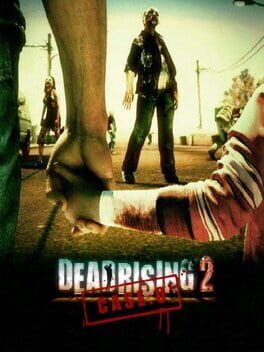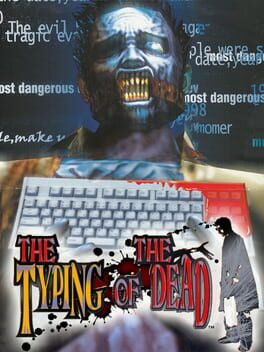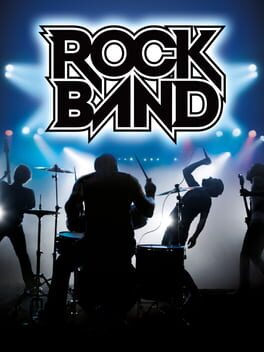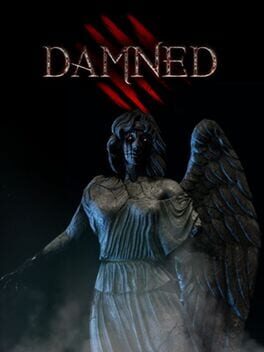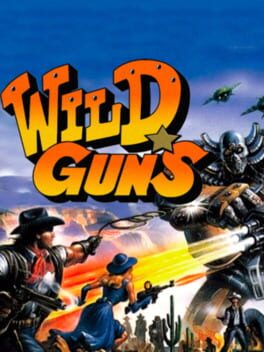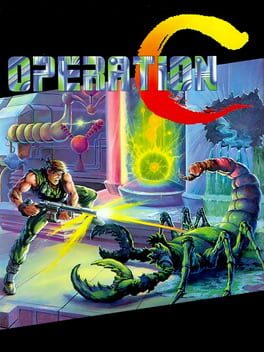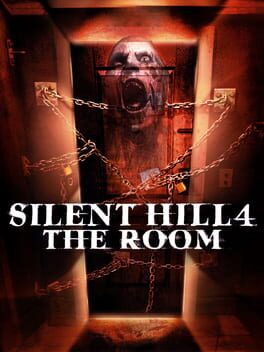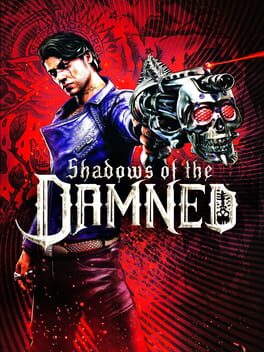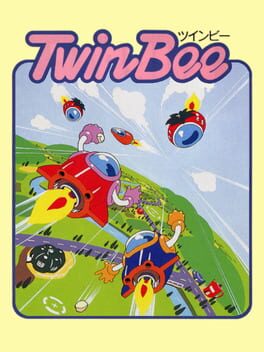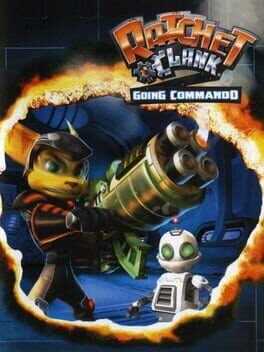2004
Many people rejected this as a Contra game right off the bat--including blowhard Youtube assholes that pretend Contra III is this flawless masterpiece despite having the exact same game design for two entire stages--but Neo Contra was absolutely a fantastic Contra game! Fast-paced action, great controls with new options, amazingly grotesque enemy designs, and awesome music!
My only real complaint is the game is just a bit too easy. They probably wanted to ease up on the players after making a top-rank finish in Shattered Soldier nearly impossible! Even so, it's interesting that they went with the name Neo Contra, seeing as how the previous game was "Shin Contra." It was like after making the most true-blue Contra game they could muster, they wanted to take the franchise down a new direction with this isometric gameplay. I would've loved if this caught on, but sadly it's diminishing returns after this incredible title . . .
My only real complaint is the game is just a bit too easy. They probably wanted to ease up on the players after making a top-rank finish in Shattered Soldier nearly impossible! Even so, it's interesting that they went with the name Neo Contra, seeing as how the previous game was "Shin Contra." It was like after making the most true-blue Contra game they could muster, they wanted to take the franchise down a new direction with this isometric gameplay. I would've loved if this caught on, but sadly it's diminishing returns after this incredible title . . .
A $40 tech demo, Resident Evil: The Mercenaries 3D is cool in its own right. Especially when you were there in the 3DS' early days. It's very impressive how smoothly this game plays close to Resident Evil 4 and 5! And the novelty of reusing assets from those games isn't really too much of a blight, since you've never seen them "demade" in this way before.
Unfortunately, that only takes the experience so far. Enemy variety is extremely underwhelming, which is a huge misstep when the entire game is centered around slaying enemies and not much else. There's a lot of potential material (all from Resident Evil 4 and 5), but any RE veteran at the time will constantly think something is missing.
The playable characters themselves have plenty of variety, but it gets old when you're fighting the same exact ghouls and beasts over and over again. And over a decade later, the novelty of this game is kind of lost, especially since pretty much all Resident Evil games are playable on multiple handheld systems these days.
Unfortunately, that only takes the experience so far. Enemy variety is extremely underwhelming, which is a huge misstep when the entire game is centered around slaying enemies and not much else. There's a lot of potential material (all from Resident Evil 4 and 5), but any RE veteran at the time will constantly think something is missing.
The playable characters themselves have plenty of variety, but it gets old when you're fighting the same exact ghouls and beasts over and over again. And over a decade later, the novelty of this game is kind of lost, especially since pretty much all Resident Evil games are playable on multiple handheld systems these days.
1998
I have pretty vivid memories of Twisted Metal 2 when I was a kid, usually at a friend's place as I didn't own a PS1 back then. Although I also have really vague memories of the third and fourth title, so I definitely played this when it was fairly new. When you're a kid, you're obviously way more accepting of low quality stuff. I'm pretty sure 3 and 4 as experiences to me back then amounted to "those were good too!" However there's something to be said about having no actual memories of the stages, the vehicles, the characters, etc.
But later on in my life, revisiting this game is absolutely miserable. I can't help it when it fails to achieve the same level of quality that was already set in the game before this. The physics of the cars are complete shit--flipping over constantly is not fun--and the overall atmosphere and style is nothing if not uninspired. This game came out in that awkward phase where EVERYONE just had to try 3D animation, and it usually comes out looking like garbage, but they didn't care because "it's 3D!"
The people behind this game only saw Twisted Metal 2--at most-- at a surface level. They didn't understand the nuances of the writing, presentation, or even the gameplay.
But later on in my life, revisiting this game is absolutely miserable. I can't help it when it fails to achieve the same level of quality that was already set in the game before this. The physics of the cars are complete shit--flipping over constantly is not fun--and the overall atmosphere and style is nothing if not uninspired. This game came out in that awkward phase where EVERYONE just had to try 3D animation, and it usually comes out looking like garbage, but they didn't care because "it's 3D!"
The people behind this game only saw Twisted Metal 2--at most-- at a surface level. They didn't understand the nuances of the writing, presentation, or even the gameplay.
It's weird, thinking about this little $5 piece. Some say it was a "glorified demo Capcom DARED TO CHARGE" (their reputation was in the crapper around this time), others felt it was just a teasing little taste whipped up by the marketing team. And it may or not be those things, but I still found this to be really endearing of a little experience.
Dead Rising 2: Case Zero is certainly a sample of what the full "Dead Rising 2" experience had to offer, but something about it was just so alluring and interesting. It could just be from the fact that fans were anticipating a sequel for about 4 years before this. I looked past the obviously worse movement options and slow animations because . . . holy crap, I'm playing a new Dead Rising game . . . at least, that's what my 20 year-old self said to my 16 past self back in 2010. It was just kind of a magical moment as someone that adored the original game.
It's also neat to see how much content here didn't even make it into the final game, so it'll always be this nice little piece that remains exclusive to a $5 experience, rather than something they could've lopped off from the full game. From what I understand, this is how a lot of people feel about Metal Gear Solid V: Ground Zeroes . . . Case Zero, Ground Zeroes. Weird coincidence.
Dead Rising 2: Case Zero is certainly a sample of what the full "Dead Rising 2" experience had to offer, but something about it was just so alluring and interesting. It could just be from the fact that fans were anticipating a sequel for about 4 years before this. I looked past the obviously worse movement options and slow animations because . . . holy crap, I'm playing a new Dead Rising game . . . at least, that's what my 20 year-old self said to my 16 past self back in 2010. It was just kind of a magical moment as someone that adored the original game.
It's also neat to see how much content here didn't even make it into the final game, so it'll always be this nice little piece that remains exclusive to a $5 experience, rather than something they could've lopped off from the full game. From what I understand, this is how a lot of people feel about Metal Gear Solid V: Ground Zeroes . . . Case Zero, Ground Zeroes. Weird coincidence.
The Typing of the Dead is one of the most ambitious approaches to providing a unique experience in an established franchise, while also managing to reuse nearly all of its assets in order to sell the same game all over again.
The gameplay is so damn unique and has the most exquisite feedback I've ever experienced at the time since . . . well, House of the Dead 2, the game this is based on. Every successful punch of the key was a tiny dopamine hit, especially for someone like me that learned to type without looking at the keyboard at a very young age. I also adore how each boss had a unique gimmick that did a great job changing up how you restrain those itchy fingers of yours!
This game is already nearly perfect for me as it is, but the fact that all the cutscenes have the main characters' guns replaced with keyboards attached to entire Dreamcast consoles strapped to their backs brings this to a perfect score in my eyes. Now THIS was a game!
The gameplay is so damn unique and has the most exquisite feedback I've ever experienced at the time since . . . well, House of the Dead 2, the game this is based on. Every successful punch of the key was a tiny dopamine hit, especially for someone like me that learned to type without looking at the keyboard at a very young age. I also adore how each boss had a unique gimmick that did a great job changing up how you restrain those itchy fingers of yours!
This game is already nearly perfect for me as it is, but the fact that all the cutscenes have the main characters' guns replaced with keyboards attached to entire Dreamcast consoles strapped to their backs brings this to a perfect score in my eyes. Now THIS was a game!
2007
This game is 1000% a "Just had to be there" kind of experience. And damn was I FUCKING THERE. I got that big fat band bundle for Christmas back in 2007 and it blew my goddamn mind as a fan of rhythm games and Guitar Hero.
Harmonix shook the world with this game--rightfully so as the original creators of Guitar Hero. They made learning about music and hitting notes in rhythm more fun than ever before, now being able to do so with 3 other friends at the same time! Not only did they expand the scope of Western rhythm gaming, but also DLC with their weekly releases! I know it sounds exorbitant, but I always liked looking up their weekly DLC drops and learning about new bands along the way. This even convinced publications that it would be the new way to sell music!
The visual style was also perfect for the game where you get to pretend you're in a rocking band. Customized characters playing along with you in the virtual world, as they're shown off through a candid cam style like a DVD release of your live album!
These days, a lot of people probably don't find this game that special, but what it set for the entire genre would change it forever. And I still have fond memories of wailing on these plastic instruments with friends until the break of dawn.
Harmonix shook the world with this game--rightfully so as the original creators of Guitar Hero. They made learning about music and hitting notes in rhythm more fun than ever before, now being able to do so with 3 other friends at the same time! Not only did they expand the scope of Western rhythm gaming, but also DLC with their weekly releases! I know it sounds exorbitant, but I always liked looking up their weekly DLC drops and learning about new bands along the way. This even convinced publications that it would be the new way to sell music!
The visual style was also perfect for the game where you get to pretend you're in a rocking band. Customized characters playing along with you in the virtual world, as they're shown off through a candid cam style like a DVD release of your live album!
These days, a lot of people probably don't find this game that special, but what it set for the entire genre would change it forever. And I still have fond memories of wailing on these plastic instruments with friends until the break of dawn.
2012
A very cool 1v2+ multiplayer horror game that's unbelievably janky--due to the dev team being tiny--but has so many great ideas and plenty of heart.
For what they made here, it was pretty well-balanced, although it won't seem like such when the monster ends up mowing you down. The game heavily encourages you to work together as a team, it was great for those sessions I hung out with friends online in our ventrilo-esque server.
Playing as the monster was pretty fun too, and each one had a pretty unique style (although the Grudge girl knockoff was probably the easiest to win with).
I wouldn't really argue with someone that doesn't like the game or just think it plays like absolute shit or can't get over the glitches and server errors that occur. They're probably right. But I definitely have a soft spot for the hours me and a handful of friends drained on this. Unfortunately, most of them moved on to Dead By Daylight, and I hate that lifeless pile of shit.
For what they made here, it was pretty well-balanced, although it won't seem like such when the monster ends up mowing you down. The game heavily encourages you to work together as a team, it was great for those sessions I hung out with friends online in our ventrilo-esque server.
Playing as the monster was pretty fun too, and each one had a pretty unique style (although the Grudge girl knockoff was probably the easiest to win with).
I wouldn't really argue with someone that doesn't like the game or just think it plays like absolute shit or can't get over the glitches and server errors that occur. They're probably right. But I definitely have a soft spot for the hours me and a handful of friends drained on this. Unfortunately, most of them moved on to Dead By Daylight, and I hate that lifeless pile of shit.
1994
I've played the recent remake of Wild Guns on-and-off, but decided to stop and play the original through to the end, just to better understand the initial game. And, frankly, it works! It works a lot better than I expected it to.
I was a bit miffed by the idea of a rail shooter with a d-pad, but this team designed the game around that, for obvious reasons. And they nailed how to make it feel good while keeping the confrontations challenging. It's easy to see what's coming at you, but will you make the leaps and jumps to avoid enemy fire, or risk yourself in order to land more damage? The gameplay has a certain rhythm to it, and it'll be really alienating to anyone that's played similar games with a lightgun, but it's pretty easy to understand and have fun with it! The whole game is a shooting gallery, after all, which fits the Western style perfectly.
Speaking of which, I also adore the aesthetics, which went for a tech-Western feel. I like how most of the machinery and robotic foes aren't too slick, but just really goofy and sometimes dressed as ol' West outlaws themselves! Everything is so big and bulky, feeling more steampunk than sci-fi to me.
My only complaint is it's just a tad too short. Even for a game this challenging, I was a little surprised that I was able to complete the game fairly quickly. I'm not sure if that calls for more of a challenge (guess that's what hard mode is for) or longer stages.
I was a bit miffed by the idea of a rail shooter with a d-pad, but this team designed the game around that, for obvious reasons. And they nailed how to make it feel good while keeping the confrontations challenging. It's easy to see what's coming at you, but will you make the leaps and jumps to avoid enemy fire, or risk yourself in order to land more damage? The gameplay has a certain rhythm to it, and it'll be really alienating to anyone that's played similar games with a lightgun, but it's pretty easy to understand and have fun with it! The whole game is a shooting gallery, after all, which fits the Western style perfectly.
Speaking of which, I also adore the aesthetics, which went for a tech-Western feel. I like how most of the machinery and robotic foes aren't too slick, but just really goofy and sometimes dressed as ol' West outlaws themselves! Everything is so big and bulky, feeling more steampunk than sci-fi to me.
My only complaint is it's just a tad too short. Even for a game this challenging, I was a little surprised that I was able to complete the game fairly quickly. I'm not sure if that calls for more of a challenge (guess that's what hard mode is for) or longer stages.
1991
Run-n-gun on the go that was certainly satisfying enough for a kid back in the 90s! While Operation C doesn't have much going on, it's still a competent and challenging Contra game that plays very closely to the NES titles.
The enemy designs are honestly very lacking, though. Even for a Gameboy game. I understand the technology might've been a bit limited, but I expected the bigger threats to look more alien or threatening and not just blocky drones. Regardless, it feels nice to play, especially on an actual Gameboy handheld.
The enemy designs are honestly very lacking, though. Even for a Gameboy game. I understand the technology might've been a bit limited, but I expected the bigger threats to look more alien or threatening and not just blocky drones. Regardless, it feels nice to play, especially on an actual Gameboy handheld.
An ambitious--albeit flawed--horror game. Silent Hill 4 is something that was mocked and ridiculed on all sides back when it was new by older audiences back in the day. Silent Hill fans hated it as it stripped away a lot of elements that were essential to the original games--such as the dynamic camera angles (SH4 still had some, but much less), emphasis on exploring an open town (SH3 mostly abandoned this too but whatever), the flashlight illuminating a dark atmosphere, and thought-provoking puzzles. Silent Hill 4 was 'missing' all of these elements.
Also, while the core design itself still emphasized on survival horror for the most part, elements like the apartment hub, unkillable ghosts, and limited inventory were ideas not particularly welcomed either. And it can't go without saying that the game introducing a barely cooked escort mission halfway into the game isn't something to shine on about, no matter how you slice it.
However, I played this a LOT when it was fairly new. And letting the mood settle right--starting the game up in the middle of the night with only the big-ass tube TV providing any sort of light-- it scared the crap out of me! I think the introduction of the game itself really gives you the best idea of what you're getting into. Strange, hazy visions of these corrupted venues that would otherwise be mundane, if not for the disheveled ghosts and gored-up creatures. And that jumpscare fake-out to top it off! That--like the games before it--finely emphasized that the developers didn't want to startle you with jumpscares, but instead keep you in that perpetual state of fright as you try to prepare for one!
But that's just the intro. The game itself further pushes this kind of atmosphere, the deeper you get into it. Which is appropriate, considering the story's centerpiece is about a lone man getting deeper and deeper into a serial killer's psyche in order to discover a way out of all this. The atmosphere in its lore and storytelling is rich and very intriguing, I'd argue it easily stands with the previous Silent Hill games in that regard. And while I definitely miss the puzzles, I did like that they focused on combat challenges instead. In that sense, this was a more straight-forward survival horror that emphasized on being more of an actual video game than the previous. At least, in my opinion.
The "Silent Hill" aspect of Silent Hill 4 is probably its downfall. It's no secret that it production initially started as an original horror game, but undisclosed reasons had them attempt connecting it with the previous 3 games, and most of said connections feel very superficial or uninteresting ("I think I got these shoes at Silent Hill!"). Perhaps fans at the time felt slighted, or tricked into buying a game that doesn't really build upon the world of Silent Hill that already felt complete by the end of the 3rd title. Still, there's nuggets of interesting emphasis on previous characters . . . although pretty easy to miss. I also have to criticize the sound designer's use of stock noises, makes it hard to take some of the game seriously, most especially the dogs making that jaguar noise when you kill them.
Overall, I have a bias towards this game. The last bastion of Team Silent, or at least what remained of them. And I kind of love what it did, as it's a game wholly unique. Nothing else plays like Silent Hill 4, not even 1-3! Also, P.T. is a bite-sized SH4.
Also, while the core design itself still emphasized on survival horror for the most part, elements like the apartment hub, unkillable ghosts, and limited inventory were ideas not particularly welcomed either. And it can't go without saying that the game introducing a barely cooked escort mission halfway into the game isn't something to shine on about, no matter how you slice it.
However, I played this a LOT when it was fairly new. And letting the mood settle right--starting the game up in the middle of the night with only the big-ass tube TV providing any sort of light-- it scared the crap out of me! I think the introduction of the game itself really gives you the best idea of what you're getting into. Strange, hazy visions of these corrupted venues that would otherwise be mundane, if not for the disheveled ghosts and gored-up creatures. And that jumpscare fake-out to top it off! That--like the games before it--finely emphasized that the developers didn't want to startle you with jumpscares, but instead keep you in that perpetual state of fright as you try to prepare for one!
But that's just the intro. The game itself further pushes this kind of atmosphere, the deeper you get into it. Which is appropriate, considering the story's centerpiece is about a lone man getting deeper and deeper into a serial killer's psyche in order to discover a way out of all this. The atmosphere in its lore and storytelling is rich and very intriguing, I'd argue it easily stands with the previous Silent Hill games in that regard. And while I definitely miss the puzzles, I did like that they focused on combat challenges instead. In that sense, this was a more straight-forward survival horror that emphasized on being more of an actual video game than the previous. At least, in my opinion.
The "Silent Hill" aspect of Silent Hill 4 is probably its downfall. It's no secret that it production initially started as an original horror game, but undisclosed reasons had them attempt connecting it with the previous 3 games, and most of said connections feel very superficial or uninteresting ("I think I got these shoes at Silent Hill!"). Perhaps fans at the time felt slighted, or tricked into buying a game that doesn't really build upon the world of Silent Hill that already felt complete by the end of the 3rd title. Still, there's nuggets of interesting emphasis on previous characters . . . although pretty easy to miss. I also have to criticize the sound designer's use of stock noises, makes it hard to take some of the game seriously, most especially the dogs making that jaguar noise when you kill them.
Overall, I have a bias towards this game. The last bastion of Team Silent, or at least what remained of them. And I kind of love what it did, as it's a game wholly unique. Nothing else plays like Silent Hill 4, not even 1-3! Also, P.T. is a bite-sized SH4.
1994
A platformer that was so puritanical on the sense of adventure and visual flair that it didn't even include a score counter! The first example of such I ever experienced, and I played a shitton of platformers back in the day. There is a completion rate, though, which marks all the secrets and collectables throughout each stage.
The developers behind the game designed all of its visuals in a 3D program, then rendered all of the animation into 2D sprites, and it works very well for the art style. They really depicted this world--or should I say, 'country'--with a sense of perspective. It was a very ambitious way to provide a sense of depth and distance in a 2D video game never seen before. So, visually speaking, it was awesome! Gameplay-wise, it was a bit of a bother because it numbed the sense of knowing where you can land on trees, cliffs, etc.
I wouldn't call that detriment to the game, though. It never blended background artifacts with actual platforms, so it's not like the game ever played any nasty tricks on you by accident. One thing I do find a bit detrimental--especially for completionists--is the method of "100%"ing the game. Like I said, that completion rate is added by finding all the collectables and secrets, but the game does not indicate in any sort of way what exactly you're missing. No way to tell what stages you haven't plundered of their secrets or collectables.
Not only that, but some of these secrets are kind of bullshit and even require a complete leap of faith! Some have posited that this was done in order to encourage sales of strategy guides that told all, or even the latest Nintendo Power magazine that featured Donkey Kong Country. I don't know how true that is, but I'm pretty sure Nintendo has pulled stuff like that before.
Anyway, one last nitpick is the difference in playing between Donkey Kong, or his species neighbor and best friend, Diddy Kong. Donkey Kong was able to easily defeat certain enemies that Diddy would have more trouble. Diddy Kong, however, was faster and slightly more agile. As someone that favored speed over strength in this kind of game, Diddy Kong was a no-brainer choice that I stuck with, as I always felt there wasn't enough leaning towards Donkey Kong to make him worthy of playing. Maybe if he at least was able to take down the bosses more quickly by requiring less hits to defeat them?
Either way, I loved this game as a kid, and it's still fun to go back to now. The music is especially a gem, really making that sound chip sing. Donkey Kong Country was one of the first (if not THE first) gambles Nintendo took on a Western company handling an original IP by them, and I think it paid off extremely well.
The developers behind the game designed all of its visuals in a 3D program, then rendered all of the animation into 2D sprites, and it works very well for the art style. They really depicted this world--or should I say, 'country'--with a sense of perspective. It was a very ambitious way to provide a sense of depth and distance in a 2D video game never seen before. So, visually speaking, it was awesome! Gameplay-wise, it was a bit of a bother because it numbed the sense of knowing where you can land on trees, cliffs, etc.
I wouldn't call that detriment to the game, though. It never blended background artifacts with actual platforms, so it's not like the game ever played any nasty tricks on you by accident. One thing I do find a bit detrimental--especially for completionists--is the method of "100%"ing the game. Like I said, that completion rate is added by finding all the collectables and secrets, but the game does not indicate in any sort of way what exactly you're missing. No way to tell what stages you haven't plundered of their secrets or collectables.
Not only that, but some of these secrets are kind of bullshit and even require a complete leap of faith! Some have posited that this was done in order to encourage sales of strategy guides that told all, or even the latest Nintendo Power magazine that featured Donkey Kong Country. I don't know how true that is, but I'm pretty sure Nintendo has pulled stuff like that before.
Anyway, one last nitpick is the difference in playing between Donkey Kong, or his species neighbor and best friend, Diddy Kong. Donkey Kong was able to easily defeat certain enemies that Diddy would have more trouble. Diddy Kong, however, was faster and slightly more agile. As someone that favored speed over strength in this kind of game, Diddy Kong was a no-brainer choice that I stuck with, as I always felt there wasn't enough leaning towards Donkey Kong to make him worthy of playing. Maybe if he at least was able to take down the bosses more quickly by requiring less hits to defeat them?
Either way, I loved this game as a kid, and it's still fun to go back to now. The music is especially a gem, really making that sound chip sing. Donkey Kong Country was one of the first (if not THE first) gambles Nintendo took on a Western company handling an original IP by them, and I think it paid off extremely well.
1992
A good first start in the subgenre of light-hearted racers, Super Mario Kart makes some design choices that were completely baffling to me as a kid, but make a lot more sense now.
The most apparent being the screen itself. Games were presented in 4:3 at the time to accommodate the common tube TV's aspect ratio. Dissimilar to F-Zero, Super Mario Kart wasn't just about going fast and seeing the road ahead, the numerous competing racers and hazardous item use make it so you need to be more aware of your surroundings. Thus, the front camera only takes up the upper half of the screen, making this "widescreen" look so you can better see everything in front of you, while having the bottom half of the screen represent either the live map of the race, or your review mirror. I appreciated these creative means of changing the way people would've likely seen racers at the time. Just as well, considering they changed a part of the genre forever.
The gameplay itself is serviceable, but isn't very gripping. At least not these days, or even the first time I went through the game myself as a teenager. I'm probably too influence by the countless hours I've sunk into its sequels. Regardless, it's still a charming little game that was certainly impressive at the time.
The most apparent being the screen itself. Games were presented in 4:3 at the time to accommodate the common tube TV's aspect ratio. Dissimilar to F-Zero, Super Mario Kart wasn't just about going fast and seeing the road ahead, the numerous competing racers and hazardous item use make it so you need to be more aware of your surroundings. Thus, the front camera only takes up the upper half of the screen, making this "widescreen" look so you can better see everything in front of you, while having the bottom half of the screen represent either the live map of the race, or your review mirror. I appreciated these creative means of changing the way people would've likely seen racers at the time. Just as well, considering they changed a part of the genre forever.
The gameplay itself is serviceable, but isn't very gripping. At least not these days, or even the first time I went through the game myself as a teenager. I'm probably too influence by the countless hours I've sunk into its sequels. Regardless, it's still a charming little game that was certainly impressive at the time.
You ever go see a movie you're excited for because it's from 'LEGENDARY DIRECTOR [x] AND GODLIKE WRITER(S) [y and/or z], and then you go see it with a friend who is less savvy on the subject, but wouldn't mind checking it out too? When the movie is over, you're sitting in the theater as the credits roll. Sullen . . . resentful . . . disappointed. Your friend is like "What's wrong?" You say "This movie." And they're like "Really? I thought it was okay!" And all you can retort with is "Yeah, it was 'okay'! That's the problem!" Shadows Of the Damned is that feeling wrapped up into a video game. Also your friend is easily amused by basic milquetoast action and dick jokes. I feel like that detail is important.
The game is a decent third-person shooter with some really nice atmosphere and fantastic enemy designs, however its story is mostly uninteresting as it's carried heavily by the banter between Garcia and Johnson: The main character and his talking gun. The writing has some good nuggets within--the storybooks you can come across deserve to be specifically shouted out--but it's very run-of-the-mill and uninspired. As for the gameplay, it's a watered-down Resident Evil 4 with only 3 different weapons to use, a severe step down from a game released 6 years before this. Enemy confrontations aren't too challenging, even on highest difficulty, and the bosses amount little to just shooting a spot that's glowing red.
Of course, anyone that saw an ounce of marketing from this game (of the 3 ounces EA provided) can't miss the names plastered on. Shinji Mikami, Suda51, and Akira Yamaoka. 3 very talented developers that provided excellence in their respective fields. How can a pot stewed between the creator of Resident Evil and the creator of killer7 come out so bland? Probably because EA didn't show you the rest of the chefs shoving their pounds of spam, powdered vanilla, or even their own body hairs into said pot. It shouldn't be a surprise to anyone that EA severely meddled with the project for the near-5 years it took making this game, going as far as kicking Suda off director's chair and appointing someone themselves.
I could go into severe detail, but I already have in an analysis video. The skinny of it is that EA didn't trust Suda at all to sell the game through his own vision, and saw Mikami as this excuse to just try and hock their own Resident Evil 4. Suda nor Mikami wanted a third-person shooter. Hell, the original concept was a survival horror in a world of darkness where your torch is your only weapon! Suda has very complicated feelings regarding this game. Its production forever changed how he looked at the industry. And that's all extremely interesting . . . much more than the game itself. Shadows of the Damned will forever be this testament to how a multi-billion dollar company can easily kill creativity.
The game is a decent third-person shooter with some really nice atmosphere and fantastic enemy designs, however its story is mostly uninteresting as it's carried heavily by the banter between Garcia and Johnson: The main character and his talking gun. The writing has some good nuggets within--the storybooks you can come across deserve to be specifically shouted out--but it's very run-of-the-mill and uninspired. As for the gameplay, it's a watered-down Resident Evil 4 with only 3 different weapons to use, a severe step down from a game released 6 years before this. Enemy confrontations aren't too challenging, even on highest difficulty, and the bosses amount little to just shooting a spot that's glowing red.
Of course, anyone that saw an ounce of marketing from this game (of the 3 ounces EA provided) can't miss the names plastered on. Shinji Mikami, Suda51, and Akira Yamaoka. 3 very talented developers that provided excellence in their respective fields. How can a pot stewed between the creator of Resident Evil and the creator of killer7 come out so bland? Probably because EA didn't show you the rest of the chefs shoving their pounds of spam, powdered vanilla, or even their own body hairs into said pot. It shouldn't be a surprise to anyone that EA severely meddled with the project for the near-5 years it took making this game, going as far as kicking Suda off director's chair and appointing someone themselves.
I could go into severe detail, but I already have in an analysis video. The skinny of it is that EA didn't trust Suda at all to sell the game through his own vision, and saw Mikami as this excuse to just try and hock their own Resident Evil 4. Suda nor Mikami wanted a third-person shooter. Hell, the original concept was a survival horror in a world of darkness where your torch is your only weapon! Suda has very complicated feelings regarding this game. Its production forever changed how he looked at the industry. And that's all extremely interesting . . . much more than the game itself. Shadows of the Damned will forever be this testament to how a multi-billion dollar company can easily kill creativity.
1985
One of the earliest shmups ever made, Twinbee on Famicom is short but sweet. A delightfully colored and vibrant game that's fairly challenging, but light enough on the enemy waves that it isn't daunting to people that would potentially want to start getting into this subgenre.
Like a lot of Konami classics, the music and sound effects are excellent, helping accentuate this epic space battle against enemies that look oddly close to houseware, as if the designers looked around their kitchen and decided this is the rogue gallery for their new arcade style space shooter. The early game development days were just magical.
Also, did anyone else first experience Twinbee in the form of a Newgrounds flash game where the titular ship just walked around normally and shot at bystanders with a real gun? No, just me? Cool.
Like a lot of Konami classics, the music and sound effects are excellent, helping accentuate this epic space battle against enemies that look oddly close to houseware, as if the designers looked around their kitchen and decided this is the rogue gallery for their new arcade style space shooter. The early game development days were just magical.
Also, did anyone else first experience Twinbee in the form of a Newgrounds flash game where the titular ship just walked around normally and shot at bystanders with a real gun? No, just me? Cool.
The perfect sequel? People seem to think so, but I think it's complicated. Ratchet & Clank 2 is a little strange, because it leaned heavily towards explosive combat, much more than the original game. There's still some good platforming stuff, but not nearly as much as the original game. Of course, when I was 13 and played this for the first time, I absolutely adored it over the original. These days, I guess my tastes have gotten more nuanced so there's something about this game in retrospect that doesn't seem right.
The weapon line-up is pretty good, albeit egregious in some of its pricing. I like the encouragement to use each weapon as much as you can in the form of "leveling" them up through kills you confirm with said weapons (although I think collecting exp through damage makes more sense) and some of the bosses are genuinely fun challenges. I like the variety shown throughout in the form of arena challenges, races, and exploration for secret items.
The story also serves as a good continuation between Ratchet and Clank, where it genuinely feels like the two are good friends that work together well. Ratchet now sets his eyes at anyone willing to threaten them, and opinions at the greedy assholes they come across ("Now even the COMPUTERS are charging us?! That's it, this galaxy blows.")
I feel it needs to be said the amount of details in the atmosphere and environment is also a bit lacking compared to the first game. Most of the worlds feel less lived-in, if that makes sense. They likely wanted the production of this to be more straight-forward now that they've established their ground with the first game. This is no longer a "We need to make a good impression for the new generation" project, but a sequel to something that already exists. While I would've loved something that feels like a proper continuation to the original title--gameplaywise--this was still a great sequel jam-packed with explosive fun.
On a bad day, I'd give this 0 stars because of how the lava gun upgrades. Y'all know what I'm talking about.
The weapon line-up is pretty good, albeit egregious in some of its pricing. I like the encouragement to use each weapon as much as you can in the form of "leveling" them up through kills you confirm with said weapons (although I think collecting exp through damage makes more sense) and some of the bosses are genuinely fun challenges. I like the variety shown throughout in the form of arena challenges, races, and exploration for secret items.
The story also serves as a good continuation between Ratchet and Clank, where it genuinely feels like the two are good friends that work together well. Ratchet now sets his eyes at anyone willing to threaten them, and opinions at the greedy assholes they come across ("Now even the COMPUTERS are charging us?! That's it, this galaxy blows.")
I feel it needs to be said the amount of details in the atmosphere and environment is also a bit lacking compared to the first game. Most of the worlds feel less lived-in, if that makes sense. They likely wanted the production of this to be more straight-forward now that they've established their ground with the first game. This is no longer a "We need to make a good impression for the new generation" project, but a sequel to something that already exists. While I would've loved something that feels like a proper continuation to the original title--gameplaywise--this was still a great sequel jam-packed with explosive fun.
On a bad day, I'd give this 0 stars because of how the lava gun upgrades. Y'all know what I'm talking about.
